Is your garden craving a splash of tranquility? Blue flowers, with their serene hues and soothing presence, can effortlessly elevate the charm of any landscape. Whether you’re dreaming of a peaceful retreat or a vibrant blue oasis, incorporating blue blooms can transform your garden into a breathtaking canvas. In this guide, we’ll explore 20 stunning blue flowers that will not only enhance your outdoor space but also create a harmonious and captivating environment.
1. Delphinium: The Majestic Spire

Overview
Delphiniums are renowned for their towering spires of vibrant blue flowers. These striking blooms can reach heights of up to six feet, making them a dramatic focal point in any garden.
Why Grow Delphinium?
- Height: Perfect for the back of garden beds or as a backdrop.
- Variety: Available in various shades of blue, from deep navy to soft sky blue.
- Bloom Time: Late spring to summer, ensuring long-lasting color.
Care Tips
- Sunlight: Full sun to partial shade.
- Soil: Well-drained, rich soil.
- Watering: Regular watering, especially during dry periods.
2. Blue Lobelia: The Cascade of Color
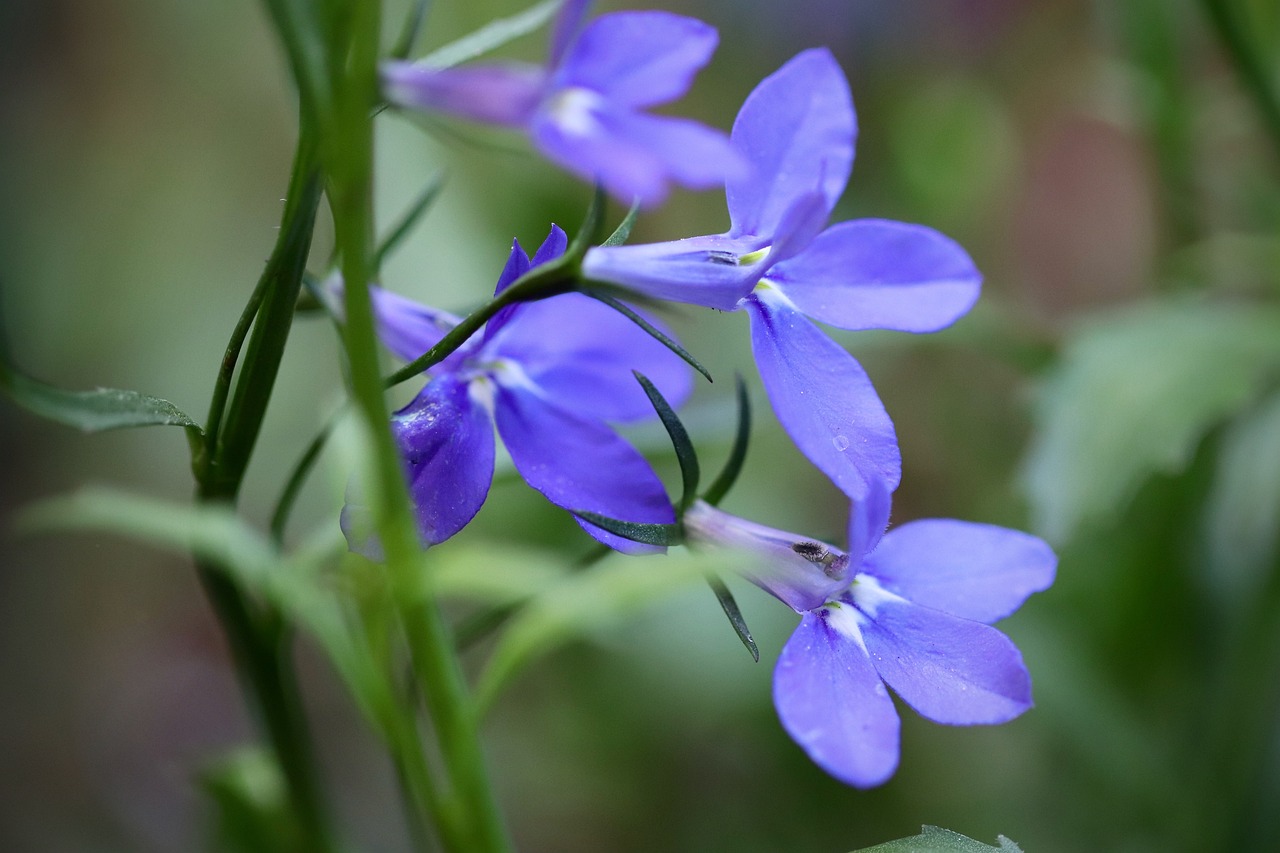
Overview
Blue Lobelia is a fantastic choice for adding a cascade of blue to your garden. Its delicate, trailing nature makes it ideal for hanging baskets or container gardening.
Why Grow Blue Lobelia?
- Versatility: Works well in both sun and shade.
- Bloom Duration: Blooms continuously from spring through frost.
- Growth Habit: Trails gracefully, perfect for adding depth to containers.
Care Tips
- Sunlight: Prefers partial to full sun.
- Soil: Moist, well-drained soil.
- Watering: Keep soil consistently moist.
3. Hydrangea ‘Nikko Blue’: The Classic Beauty

Overview
The ‘Nikko Blue’ Hydrangea is a timeless favorite among gardeners. Its large, mophead flowers are a stunning shade of blue that can turn your landscape into a floral wonderland.
Why Grow Hydrangea ‘Nikko Blue’?
- Bloom Size: Large, showy blooms that stand out.
- Adaptability: Can change color based on soil pH.
- Season: Blooms from summer to fall.
Care Tips
- Sunlight: Prefers morning sun and afternoon shade.
- Soil: Acidic soil enhances blue color.
- Watering: Regular watering, especially during dry spells.
4. Bluebells: The Woodland Charm

Overview
Bluebells bring a touch of woodland magic to your garden. Their drooping, bell-shaped flowers create a whimsical effect that’s hard to resist.
Why Grow Bluebells?
- Natural Look: Ideal for creating a naturalized area.
- Bloom Time: Late spring, filling gaps with color.
- Fragrance: Sweetly fragrant blooms.
Care Tips
- Sunlight: Prefers partial shade.
- Soil: Moist, well-drained soil.
- Watering: Keep soil consistently moist.
5. Salvia ‘Blue Hills’: The Hardy Performer
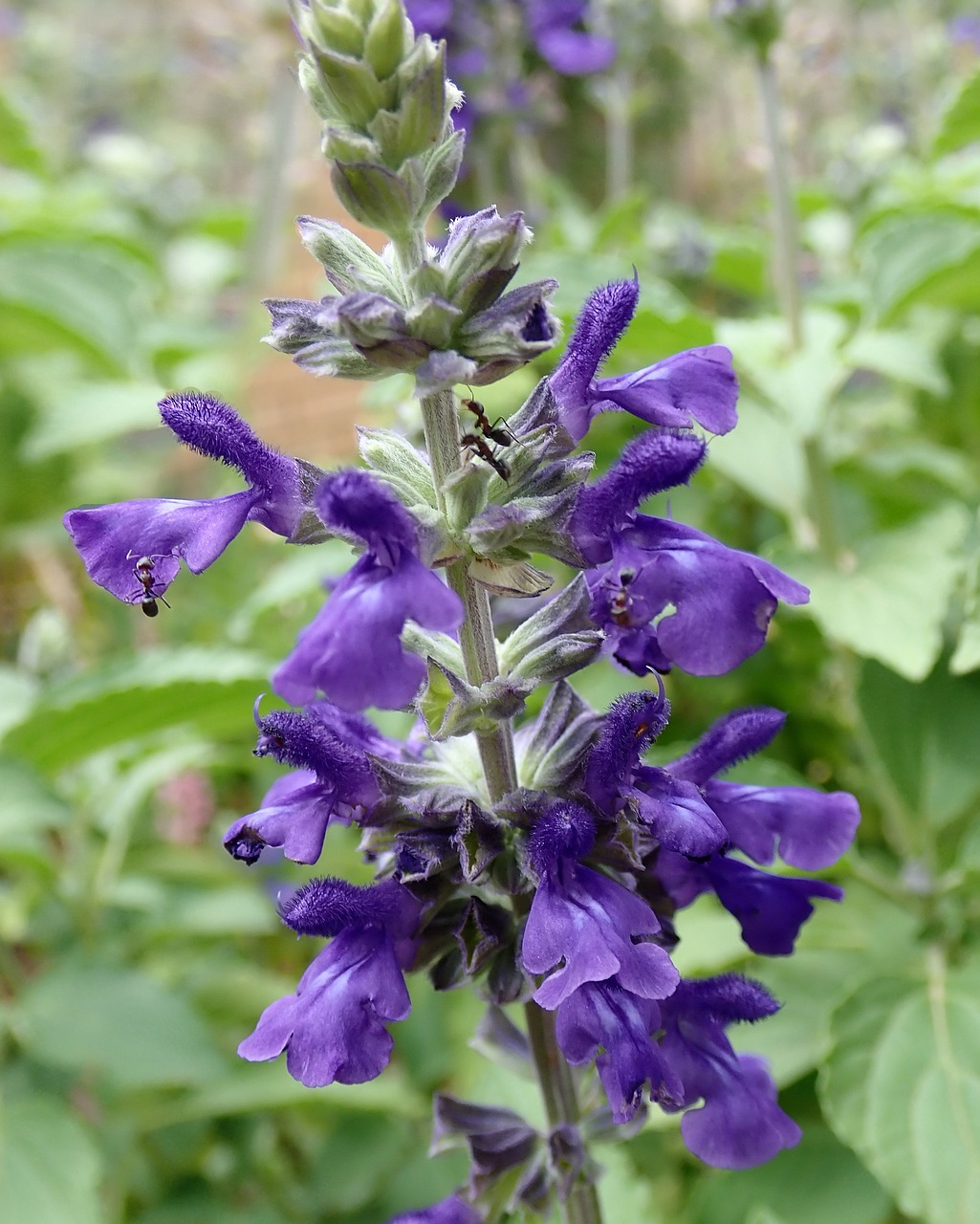
Overview
Salvia ‘Blue Hills’ stands out for its hardy nature and vibrant blue spikes. This perennial is a great choice for gardeners looking for reliable color throughout the growing season.
Why Grow Salvia ‘Blue Hills’?
- Long Bloom: Blooms from early summer to fall.
- Drought Tolerance: Handles dry conditions well.
- Pollinator Friendly: Attracts bees and butterflies.
Care Tips
- Sunlight: Full sun.
- Soil: Well-drained, sandy soil.
- Watering: Low to moderate watering needs.
6. Morning Glory ‘Heavenly Blue’: The Quick Climber
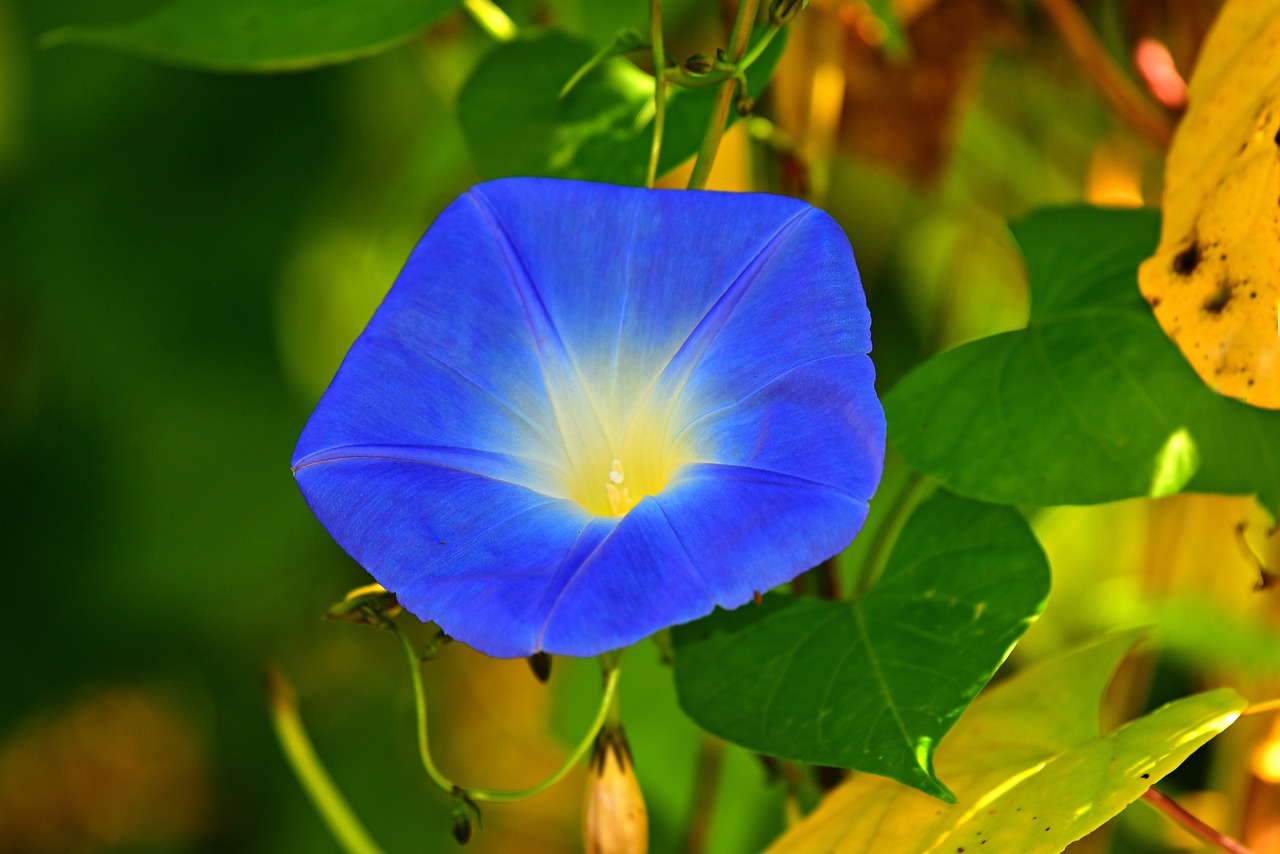
Overview
Morning Glories are known for their rapid growth and striking blue flowers. The ‘Heavenly Blue’ variety is especially popular for its vibrant color and impressive climbing ability.
Why Grow Morning Glory ‘Heavenly Blue’?
- Growth Rate: Fast-growing and covers trellises quickly.
- Flower Color: Bright, electric blue flowers.
- Bloom Time: Summer to fall.
Care Tips
- Sunlight: Full sun.
- Soil: Well-drained soil.
- Watering: Regular watering, but allow soil to dry between waterings.
7. Campanula ‘Blue Clips’: The Charming Bellflower

Overview
Campanula, or bellflower, is known for its charming, bell-shaped blooms. The ‘Blue Clips’ variety offers a compact growth habit and abundant blue flowers.
Why Grow Campanula ‘Blue Clips’?
- Compact Size: Ideal for borders and containers.
- Abundant Blooms: Continuous flowering throughout the season.
- Ease of Care: Low maintenance.
Care Tips
- Sunlight: Prefers full sun to partial shade.
- Soil: Well-drained soil.
- Watering: Regular watering.
8. Veronica ‘Royal Candles’: The Bold Spikes

Overview
Veronica ‘Royal Candles’ features bold, upright spikes of blue flowers. This plant adds a vertical element to garden beds and borders.
Why Grow Veronica ‘Royal Candles’?
- Height: Reaches up to 18 inches, adding height to beds.
- Long-Lasting Blooms: Blooms from summer to fall.
- Low Maintenance: Requires minimal care.
Care Tips
- Sunlight: Full sun.
- Soil: Well-drained soil.
- Watering: Moderate watering needs.
9. Iris ‘Caesar’s Brother’: The Elegant Showstopper
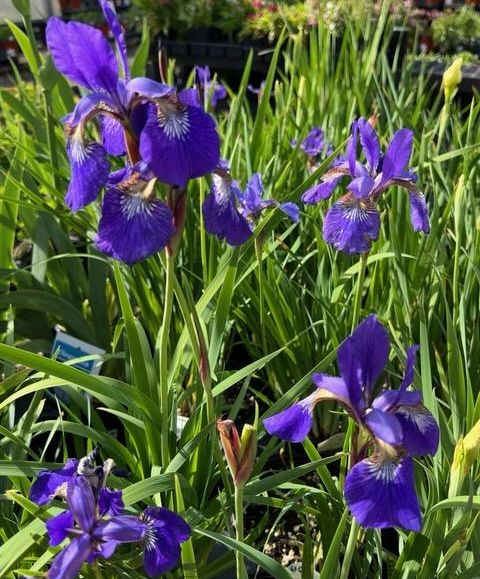
Overview
The Iris ‘Caesar’s Brother’ is a standout for its deep, royal blue flowers. Its elegant blooms and striking appearance make it a favorite among gardeners.
Why Grow Iris ‘Caesar’s Brother’?
- Color: Rich, royal blue flowers.
- Season: Blooms in late spring.
- Structure: Adds a dramatic vertical element.
Care Tips
- Sunlight: Full sun.
- Soil: Well-drained soil.
- Watering: Moderate watering.
10. Plumbago: The Vibrant Ground Cover
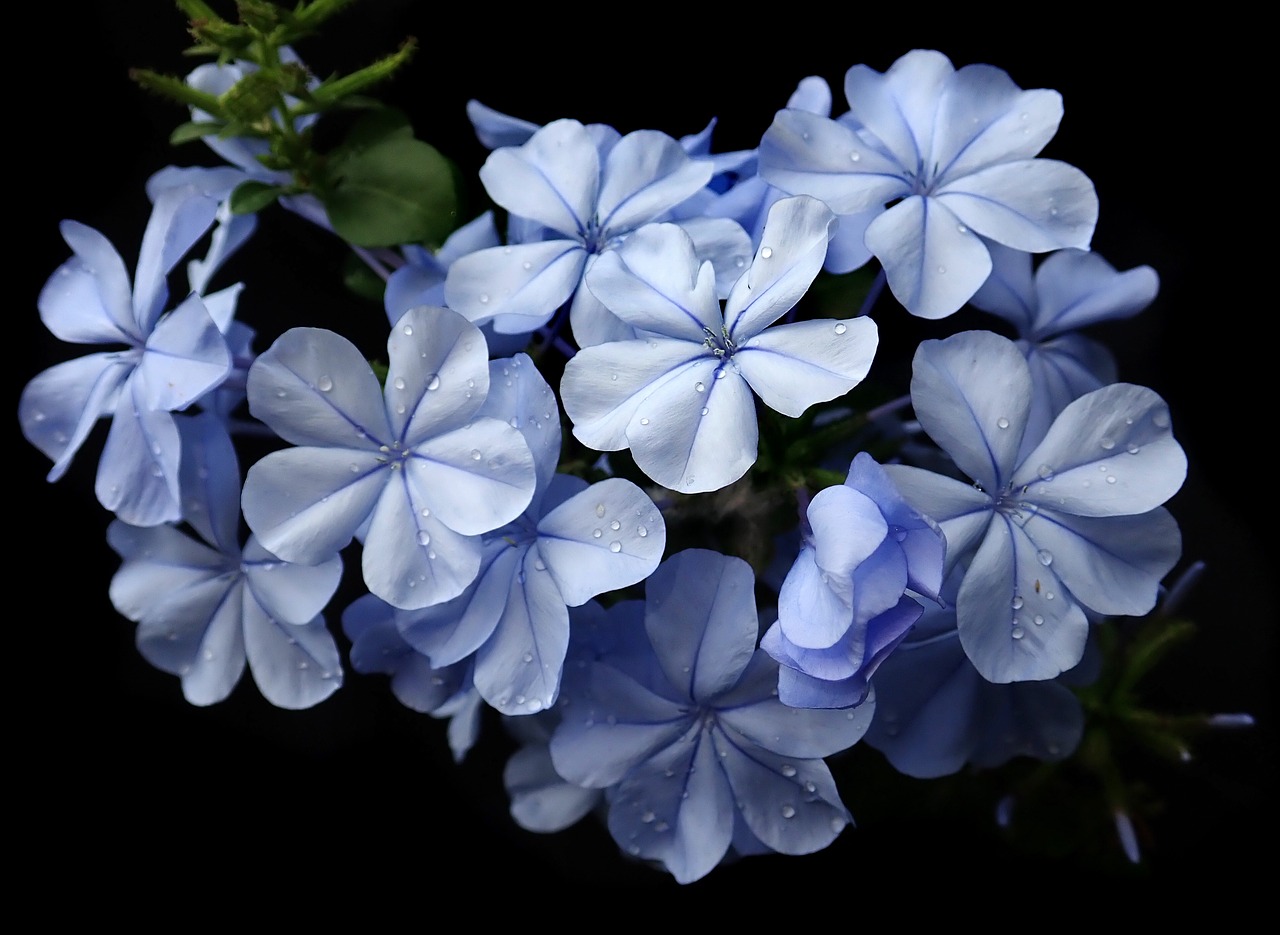
Overview
Plumbago, also known as leadwort, is a fantastic ground cover plant with vibrant blue flowers. It’s perfect for filling in gaps and adding a splash of color to the garden.
Why Grow Plumbago?
- Ground Cover: Excellent for covering large areas.
- Bloom Time: Blooms from summer to fall.
- Color: Bright blue flowers.
Care Tips
- Sunlight: Full sun to partial shade.
- Soil: Well-drained soil.
- Watering: Regular watering.
11. Blue False Indigo: The Hardy Beauty
Overview
Blue False Indigo is a robust perennial with striking blue blooms and unique pea-like flowers. It’s known for its durability and vibrant color.
Why Grow Blue False Indigo?
- Hardiness: Tolerant of a range of conditions.
- Color: Deep blue flowers.
- Structure: Adds height and drama.
Care Tips
- Sunlight: Full sun.
- Soil: Well-drained soil.
- Watering: Low to moderate.
12. Anemone ‘Blue Shadows’: The Delicate Star
Overview
Anemone ‘Blue Shadows’ is known for its delicate, star-shaped blue flowers. It’s a charming addition to shaded garden areas.
Why Grow Anemone ‘Blue Shadows’?
- Shade Tolerance: Ideal for shaded or woodland gardens.
- Flower Shape: Unique, star-shaped blooms.
- Season: Blooms in late summer to fall.
Care Tips
- Sunlight: Partial to full shade.
- Soil: Moist, well-drained soil.
- Watering: Regular watering.
13. Nigella ‘Miss Jekyll Blue’: The Unique Flower
Overview
Nigella, also known as love-in-a-mist, offers unique blue flowers surrounded by a frilly, lacy foliage. It’s perfect for adding a touch of whimsy to your garden.
Why Grow Nigella ‘Miss Jekyll Blue’?
- Unique Appearance: Frilly foliage and unusual flowers.
- Bloom Time: Blooms from late spring to summer.
- Self-Seeding: Can self-seed, returning year after year.
Care Tips
- Sunlight: Full sun to partial shade.
- Soil: Well-drained soil.
- Watering: Moderate watering needs.
14. Scabiosa ‘Butterfly Blue’: The Lacy Delight
Overview
Scabiosa, or pincushion flower, is known for its intricate, lacy blooms. The ‘Butterfly Blue’ variety offers a soft, soothing blue color.
Why Grow Scabiosa ‘Butterfly Blue’?
- Bloom Form: Unique pincushion-like flowers.
- Attracts Pollinators: Great for attracting bees and butterflies.
- Bloom Time: Continuous blooms from summer to fall.
Care Tips
- Sunlight: Full sun.
- Soil: Well-drained soil.
- Watering: Regular watering.
15. Blue Salvia: The Colorful Focal Point
Overview
Blue Salvia is a vibrant addition to any garden. Its rich blue spikes and long bloom time make it an excellent choice for adding a bold splash of color.
Why Grow Blue Salvia? (continued)
- Flowering Duration: Prolonged blooming from early summer to fall.
- Attracts Pollinators: Draws bees and butterflies to your garden.
Care Tips
- Sunlight: Thrives in full sun.
- Soil: Prefers well-drained, sandy soil.
- Watering: Moderate watering; allow soil to dry between waterings.
16. Cornflower: The Timeless Classic
Overview
Cornflowers, or Bachelor’s Buttons, are beloved for their bright blue petals and classic charm. They bring a nostalgic feel to any garden and work wonderfully as cut flowers.
Why Grow Cornflower?
- Color: Vivid blue blooms with a classic look.
- Bloom Time: Blooms from late spring through summer.
- Versatility: Suitable for garden beds, borders, and cut flower arrangements.
Care Tips
- Sunlight: Full sun to partial shade.
- Soil: Well-drained, average soil.
- Watering: Regular watering, but avoid waterlogging.
17. Ageratum ‘Blue Horizon’: The Soft Touch
Overview
Ageratum ‘Blue Horizon’ is cherished for its fluffy, soft blue flowers and compact growth habit. It’s perfect for filling in small spaces or container gardening.
Why Grow Ageratum ‘Blue Horizon’?
- Texture: Soft, fluffy flower clusters.
- Bloom Time: Continuous blooms from summer to frost.
- Size: Compact growth, ideal for small gardens and containers.
Care Tips
- Sunlight: Prefers full sun.
- Soil: Well-drained, rich soil.
- Watering: Keep soil consistently moist.
18. Blue Skyflower: The Exotic Touch
Overview
Blue Skyflower, also known as Blue Pincushion, offers an exotic flair with its striking blue and unique flower structure. It’s a great choice for adding an element of intrigue to your garden.
Why Grow Blue Skyflower?
- Unique Appearance: Exotic, striking blue flowers.
- Blooming Season: Long-lasting blooms from late spring to summer.
- Garden Impact: Adds a touch of the extraordinary to your landscape.
Care Tips
- Sunlight: Full sun to partial shade.
- Soil: Well-drained soil.
- Watering: Moderate watering; ensure good drainage.
19. Siberian Squill: The Early Bloomer
Overview
Siberian Squill is an early bloomer that carpets the garden with delicate blue flowers in early spring. Its early appearance makes it a delightful way to welcome the new season.
Why Grow Siberian Squill?
- Early Bloomer: Provides color early in the season.
- Ground Cover: Spreads easily to create a blue carpet.
- Adaptability: Tolerates various soil conditions.
Care Tips
- Sunlight: Prefers full sun to partial shade.
- Soil: Well-drained soil.
- Watering: Light watering; drought-tolerant once established.
20. Creeping Jenny: The Ground-Hugging Delight
Overview
Though not exclusively blue, Creeping Jenny often showcases lovely blue-green foliage and can add a unique touch to your garden’s color palette. Its creeping nature makes it ideal for ground cover and adding texture.
Why Grow Creeping Jenny?
- Foliage Color: Blue-green leaves provide a unique color contrast.
- Ground Cover: Excellent for filling in spaces and preventing erosion.
- Adaptability: Grows well in a variety of conditions.
Care Tips
- Sunlight: Prefers partial to full shade.
- Soil: Well-drained soil.
- Watering: Regular watering, but can tolerate dry conditions once established.
